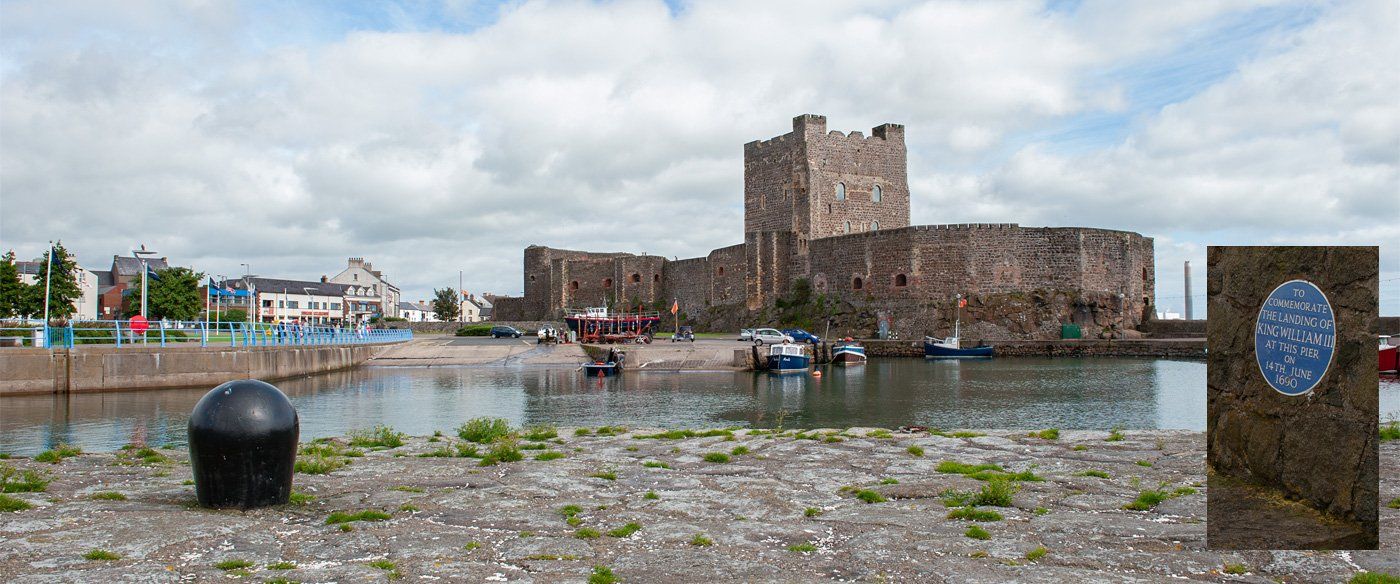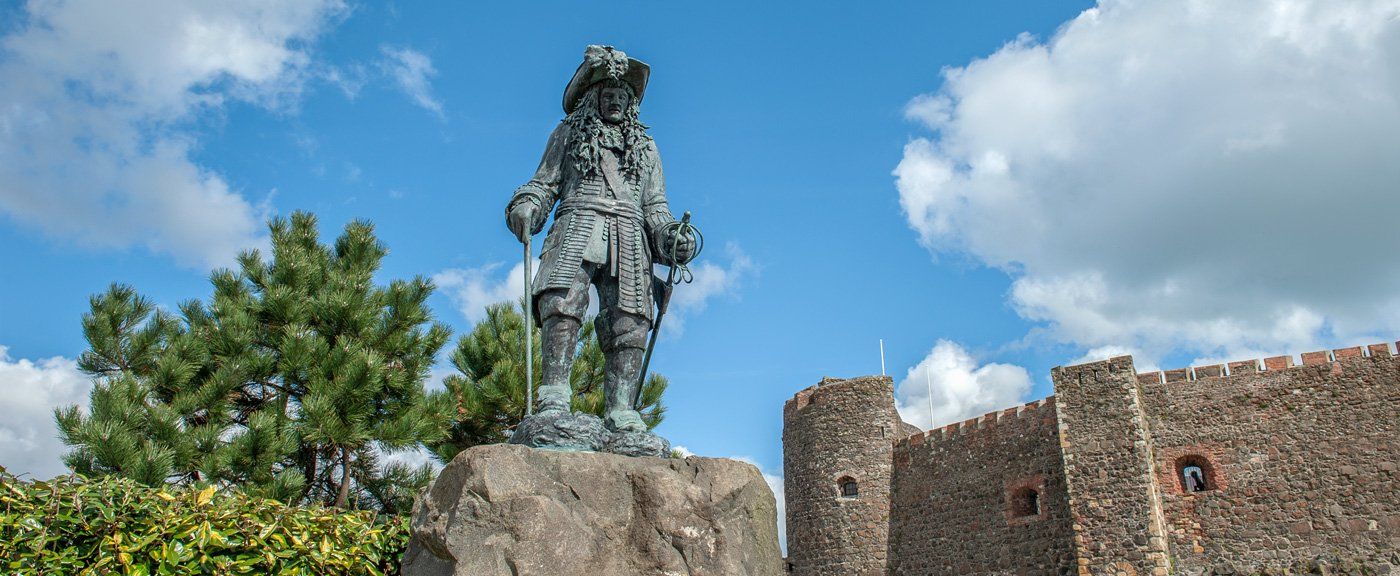King William III
Carrickfergus played a role in the Williamite war in Ireland as well as the wider European dimension when King William III Prince of Orange arrived here in June 1690 after the town and castle had been secured by General Schomberg, who at the time was eighty years old and a revered military leader and strategist. The town was taken but a garrison force retreated into the castle, Schomberg lay siege to the castle and ordered a bombardment of cannon fire from ships anchored in the Lough. The governor Colonel Charles MacCarthy after some negotiation eventually surrendered the castle. Schomberg agreed to escort him and the disarmed garrison to the nearest Jacobite stronghold. However, a large proportion of residents were set on attacking the surrendered garrison. Schomberg had to break up and hold back the mob to allow the disarmed soldiers to retreat from the town.
King William arrived by ship and embarked on the quay, the location today is marked with a blue plaque, after being greeted and refreshed he rode to the White House at Whiteabbey to meet Schomberg before going to Belfast and then to the Boyne where on 1st July 1690 he engaged in battle with his father-in-law James II, the then deposed King of England. The final decisive confrontation between the Jacobite and the Williamite forces took place at Aughrim in County Galway on the 12th July 1691, it was the bloodiest battle ever fought on Irish soil with the loss of over 7,000 men.


